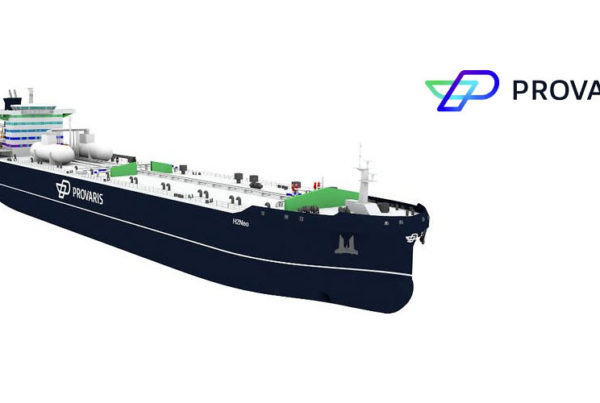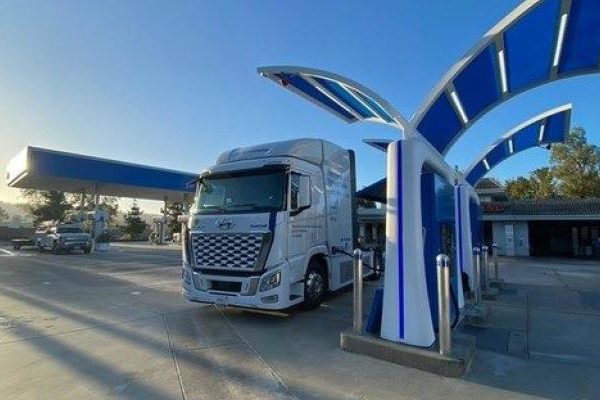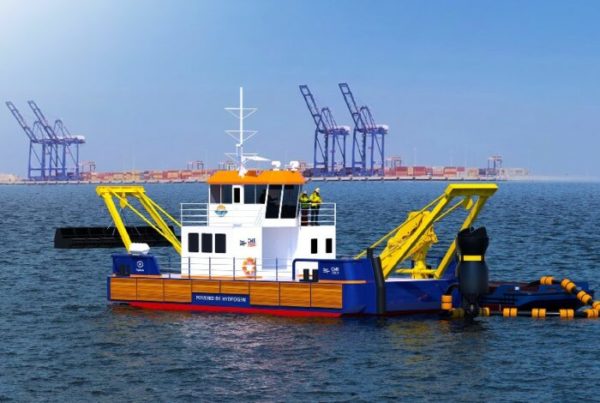
Amsterdam Logistics–On behalf of the H2Gate consortium, Ramon Ernst (managing director Evos) and Eduard de Visser (director Strategy & Innovation Port of Amsterdam) handed over the blueprint for importing one million tonnes of green hydrogen via the port of Amsterdam to Diederik Samsom, head of cabinet of Frans Timmermans.
Green hydrogen is a potential game changer that makes it possible to realize the greening of the heavy industrial sectors (such as steel production) and heavy transport. The demand for green hydrogen in the Netherlands and Europe is expected to increase sharply in the coming decades.
Green hydrogen is transported safely and cost-efficiently by hydrogen carriers
However, shipping and handling liquid hydrogen is a challenge in terms of cost and safety. Hydrogen carriers offer a cost-effective and flexible solution for transporting green hydrogen over long distances. This means that hydrogen is bonded to a carrier at the place where it is produced, and then transported to its destination. At the destination, the hydrogen is split off from the carrier again.
About H2Gate
H2Gate, a consortium consisting of Evos, Hydrogenious (Germany), Hysilabs (France), Electriq Global (Israel) and Port of Amsterdam, has committed to establish a 100% green value chain for the transport, storage, release and distribution in the Amsterdam port area and its hinterland, including major industrial hubs in the Netherlands and Germany.
The H2Gate consortium is unique because of the synergistic bundling of multiple hydrogen carrier technologies that enable the safe transport of green hydrogen to areas such as the Amsterdam region and the Ruhr area. In this way, these technologies provide an alternative to the safety problems of ammonia-based carriers and liquid hydrogen. In addition, the existing terminal infrastructure in the Port of Amsterdam is very suitable for these hydrogen carriers.
In the coming period, the consortium, together with hydrogen producers from various global regions and customers, will build this new supply chain step by step.
You can read more about this project in the report handed over to Diederik Samson, or watch the video below to see how it works.
Read the most up to date Fuel Cell and Hydrogen Industry news at FuelCellsWorks




